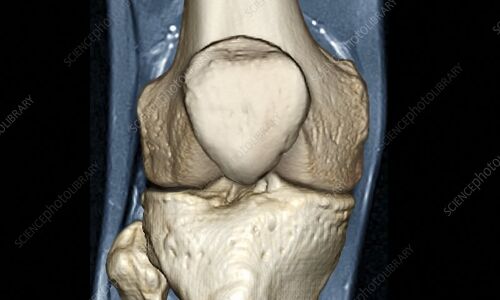
Nearly 20% of Total knee Arthroplasty patients remain dissatisfied. This is a major concern in 21st century arthroplasty practice. Accurate implant sizing is shown to improve the implant survival, knee balance and patient reported outcome.
Sanjay Bhalchandra Londhe et al conducted a study to assess the efficacy of pre-operative three-dimensional (3D) CT scan templating in a robot-assisted (RA) TKA in predicting the correct implant sizes and alignment.
The authors prospectively collected data in a single center from 30 RA-TKAs and assessed. Inclusion criterion was patients with end stage arthritis (both osteoarthritis and rheumatoid arthritis) undergoing primary TKA. Patients undergoing revision TKA and patients not willing to participate in the study were excluded.
Preliminary study of ten patients had indicated almost 100% accuracy in determining the implant size and position. Sample size was estimated to be 28 for 90% reduction in implant size and position error with α error of 0.05 and beta error of 0.20 with power of study being 80.
Post operative radiographs were assessed by an independent observer with respect to implant size and position. The accuracy of femoral and tibial component sizing in the study was compared with the historic control with Chi-squared test. The p value < 0.05 was considered significant.
Key findings of the study were:
• The study included 7 male and 23 female patients.
• The mean age of the study group cohort was 69 years.
• The mean body mass index (BMI) was 29.1 (range 20.1–38.5).
• The pre-operative CT scan 3D templating accuracy was 100% (30 out of 30 knees) for femoral component and 96.67% (29 out of 30 knees) for tibial component.
• According to Peek’s criteria, no femoral or tibial implant was found to be undersized/ oversized.
• The implant position and limb alignment was accurate in 100% of patients.
• The accuracy of femoral component and tibial component sizing is statistically significant (Chi-squared test, p value 0.0105 and 0.0461, respectively).
“The results of our study clearly demonstrate the efficacy of the pre-operative 3 D CT scan-based templating in accurately predicting the actual femur and tibia implant sizes. Also, the pre-operative templating helps to achieve optimal implant position and limb alignment. This may have a potential to improve operating room efficiency and achieve long-term better patient reported outcomes due to improved implant survival. Continuation of this study is necessary to evaluate the effect of these benefits on long term implant survival and patient reported outcomes” the authors commented.
Further reading:
Efficacy of the Pre operative Three Dimensional (3D) CT Scan Templating in Predicting Accurate Implant Size and Alignment in Robot Assisted Total Knee Arthroplasty
Sanjay Bhalchandra Londhe, Santosh Shetty et al
Indian Journal of Orthopaedics
